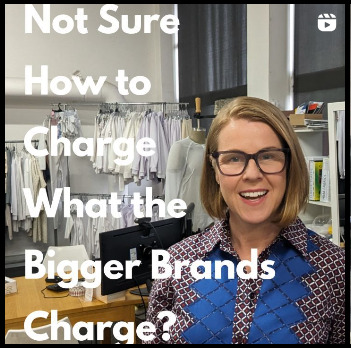Unleashing the Pricing Power: How New Brands Can Establish Themselves and Charge their Worth

Are you a designer who quivers at the thought of your pricing? Feel like you can’t tag your creations the same as renowned brands because they are well-established? Let’s address this crucial aspect of pricing that tends to affect quite a number of designers globally.
Firstly, let’s dispel this belief that lesser-known brands can’t charge as much as famous brands. Why should an unknown entity charge the same amount? Well, we don’t evaluate a brand’s pricing based on its existence duration. Most of the time, it’s hard to tell how long a brand has been in the market. We pay for the quality, the fashion statement, the overall professionalism of the website, and the look of the products. If they resonate with us, we are game, regardless of how long the brand has been in business.
The ‘Charging Low and Increasing Later’ Strategy
Just reflect on this: what happens when you fall in love with a brand due to its style, fits, and pricing, only to find the prices skyrocket when you return to make another purchase? Or worse, they compromise on the product quality to widen their profit margin?
Such situations are too common and, honestly, quite frustrating for customers. This fickleness shakes their trust in the brand, thus affecting the brand-customer relationship. Remember, acquiring a new customer is costlier than retaining an old one.
Click on the image below to see what I had to say about this on my Instagram Live.
For those planning to start a brand or those who have started and are still figuring out the pricing, here’s a quick tip: Do some online shopping. No, seriously. Observe the brands that match your production style and target audience.
If you’re planning to price your products at par with the big box retailer, you need to be ready to play the game at their level. This strategy involves having a large team, producing in bulk overseas, maintaining quality control, handling logistics, and possibly even setting up physical retail stores.
So, what should you charge if you are producing locally? While the pricing most definitely depends on the costs involved in production, client preferences, and the prevailing market trends, a generic price suggestion could be approximately $350-400 for a dress, $280-350 for pants or shirts, and so on.
Keep in mind that such numbers are just a guidance. You’ll need to factor in all your costs and targeted profits before setting the final price. But remember: consistent quality at a consistent price will win you loyal customers. And repeat sales are what we all strive for, right? With the right pricing strategy in place, even a new brand can charge the same as a well-established one. So the next time you undervalue your potential due to the age of your brand, just remember: you set your value.
